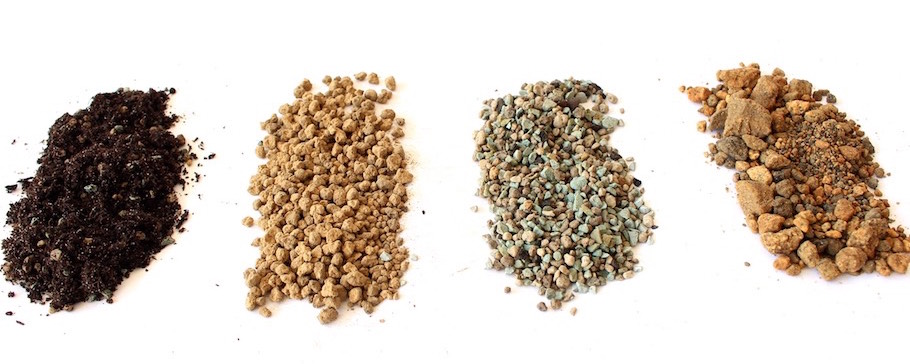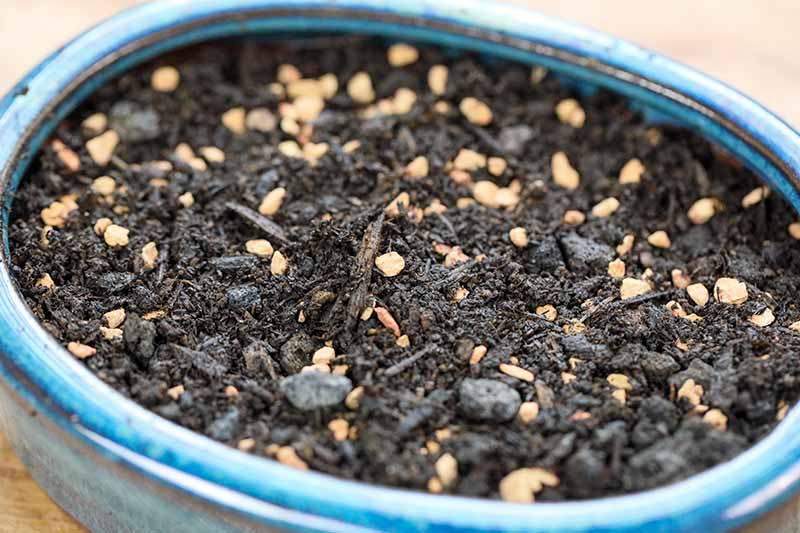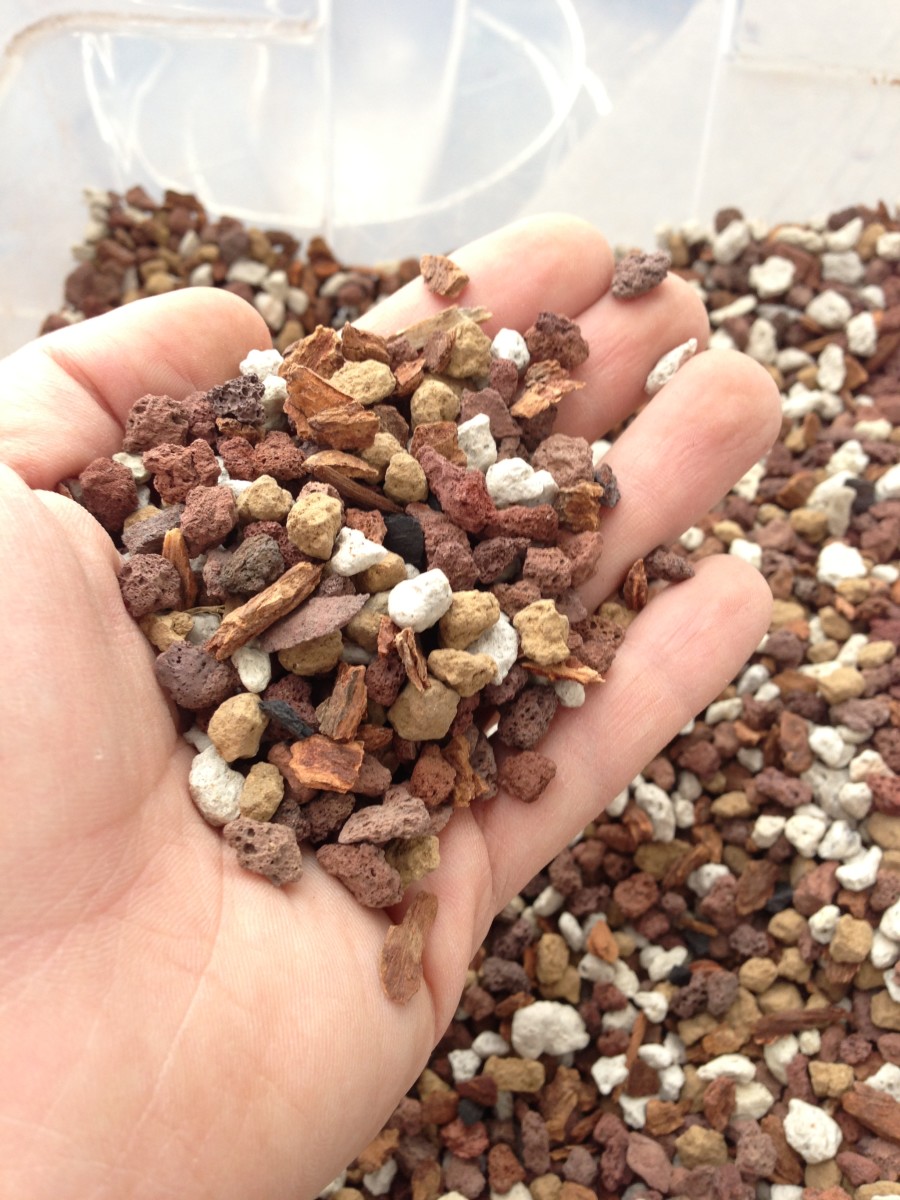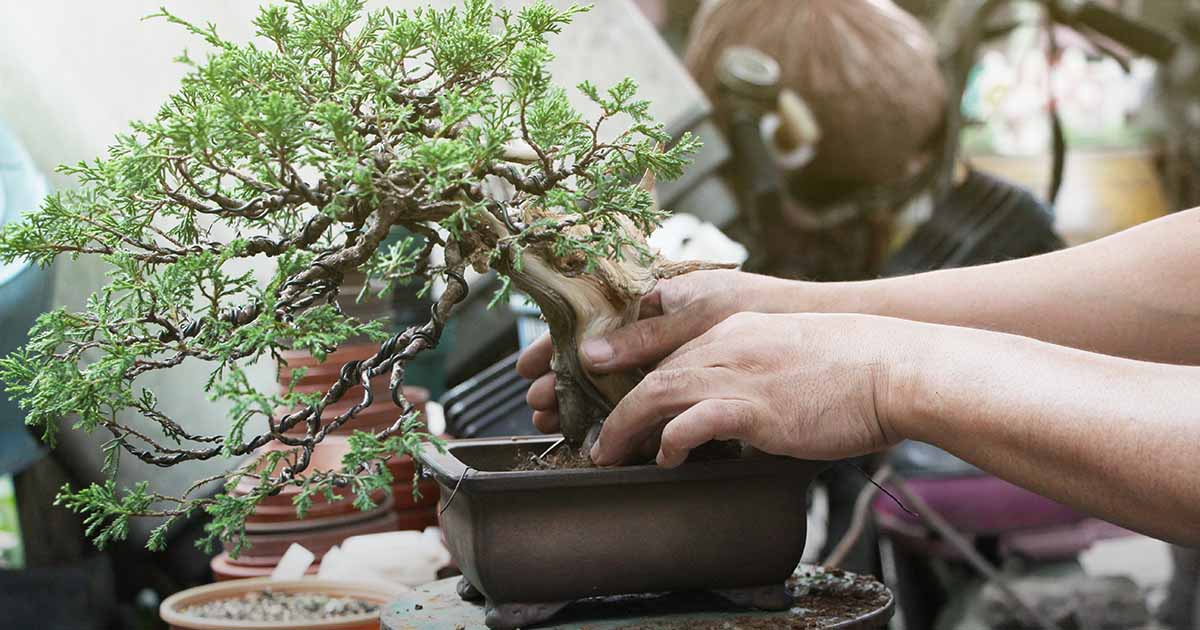How Much You Need To Expect You'll Pay For A Good Akadama bonsai soil
If you've ever been captivated because of the art of bonsai, you may well be thinking if Distinctive soil is necessary to cultivate these miniature masterpieces. The answer is Of course! Unique soil is important for the wellbeing and vitality of bonsai trees.In this post, we will discover the different types of soil and substrates used in bonsai cultivation, including natural and organic and inorganic solutions.
We'll also find out proposed soil mixtures for various bonsai species, which include deciduous, coniferous, and indoor versions. From akadama and pumice to moss and river sand, we are going to dive in the interesting environment of bonsai soil and enable you to understand why It truly is a significant Element of cultivating these exquisite trees.

Bonsai soil
What is bonsai soil?
Bonsai soil is a specialized type of soil that is specifically formulated for growing and maintaining bonsai trees. Unlike regular garden soil, bonsai soil is well-draining and provides the necessary nutrients and moisture balance for the tree's root system. The composition of bonsai soil is carefully designed to meet the unique needs of bonsai trees, ensuring their health and longevity.
The importance of bonsai soil
The choice of soil plays a crucial role in the success of your bonsai tree. The right soil provides optimal drainage, allowing excess water to flow freely and preventing root rot. It also promotes a healthy and well-developed root system, which is essential for the overall health and growth of the tree. Bonsai soil retains moisture while allowing air to reach the roots, striking the perfect balance for the tree's needs. Choosing the right bonsai soil is essential for maintaining a healthy and thriving bonsai tree.
Bonsai substrates
What are bonsai substrates?
Bonsai substrates refer to the different materials that can be used to create the ideal soil composition for bonsai trees. These substrates are carefully chosen to meet the specific needs of different species of bonsai trees and to ensure proper water drainage and nutrient availability.
Different types of bonsai substrates
There are various types of bonsai substrates available, each with its own unique characteristics and benefits. Some common bonsai substrates include:
- Organic materials: These include ingredients such as bark, peat moss, and coconut coir. Organic substrates help retain moisture and provide essential nutrients to the bonsai tree.
- Inorganic components: These include things like parts like pumice, lava rock, and akadama. Inorganic substrates supply superb drainage, making sure that excessive h2o would not accumulate around the roots of the bonsai tree.
- Soil amendments: These are definitely substances which are additional on the soil mixture to enhance its Houses. Examples of soil amendments include perlite, vermiculite, and sand. They improve the soil's aeration, h2o-holding potential, and nutrient availability.
By comprehension the different types of bonsai substrates and their Attributes, you are able to pick the most suitable one particular for your bonsai tree's desires.
Organic or Inorganic Soils
Natural and organic soils for bonsai
Organic soils for bonsai are composed of pure products which include bark, peat moss, coconut coir, and compost. These elements give a wealthy source of nutrients with the bonsai tree and boost healthful root enhancement. Organic soils even have superior water retention Houses, making certain which the tree gets adequate humidity in between watering sessions. Even so, it is important to notice that natural soils may well stop working eventually and develop into compacted, leading to weak drainage and prospective root issues.
Inorganic soils for bonsai
Inorganic soils for bonsai encompass elements like pumice, lava rock, akadama, and soil amendments like perlite or vermiculite. These elements have excellent drainage Houses, stopping waterlogged soil and endorsing aeration across the roots. Inorganic soils are chosen by many bonsai enthusiasts because of their longevity and ability to supply a secure surroundings for your bonsai tree's root program. However, They might need much more Recurrent watering and additional fertilization, as they do not keep just as much dampness or nutrients as organic soils.
Positives and negatives of utilizing natural and inorganic soils for bonsai
Picking concerning natural and organic and inorganic soils on your bonsai tree depends upon many variables, such as the certain species of tree, your weather, and private Choices. Listed here are the pros and cons of every:
Natural and organic soils:
- Professionals: Give nutrients, good drinking water retention, encourage wholesome root growth.
- Negatives: May stop working eventually, potential for bad drainage Otherwise adequately maintained.
Inorganic soils:
- Professionals: Superb drainage, extended-Long lasting, steady ecosystem for roots.
- Cons: Fewer h2o retention, might call for more Repeated watering and fertilization.
By thinking of the benefits and drawbacks of both equally natural and organic and inorganic soils, you can also make an knowledgeable selection according to the particular needs of one's bonsai tree.
Soil factors
Essential elements of bonsai soil
Bonsai soil is often composed of three major components: grit, natural and organic issue, and clay. These elements operate with each other to produce the ideal soil structure for your bonsai tree's root method.
- Grit: Grit, for example sand or perlite, supplies drainage and aeration while in the soil. It helps stop waterlogging and lets air to get to the roots.
- Organic and natural make a difference: Natural and organic make any difference, such as compost or bark, supplies nutrients to the bonsai tree. In addition it assists retain humidity and improve the soil's Over-all composition.
- Clay: Clay particles provide some h2o retention traits and help bind the soil collectively. Having said that, a lot of clay can cause very poor drainage and compaction.
Purpose of each and every soil element
Each soil component plays an important role in creating a nicely-balanced and nutritious setting for the bonsai tree's roots.
- Grit: Grit provides the required drainage and aeration from the soil. It helps prevent the roots from sitting in stagnant h2o, lowering the chance of root rot and endorsing overall root wellness.
- Organic and natural subject: Natural make any difference presents essential nutrients towards the bonsai tree. It aids in dampness retention and contributes to the general construction on the soil.
- Clay: Clay particles enable bind the soil together and supply some h2o retention capability. However, it is vital to harmony the amount of clay to stay away from challenges like lousy drainage and compaction.
By knowing the roles of every soil element, you could create a well balanced bonsai soil blend that fulfills the particular demands of your respective tree.

Recommended Bonsai soil mixtures
Common bonsai soil mixtures
There are several common bonsai soil mixtures that have been proven effective for various types of bonsai trees. These mixtures typically consist of a combination of inorganic substrates, organic matter, and soil amendments.
Some of the commonly used bonsai soil mixtures include:
- Akadama, pumice, and lava rock: This mixture is popular among bonsai enthusiasts for its excellent drainage and water retention properties.
- Akadama, lava rock, and organic and natural make a difference: This combination combines the many benefits of inorganic substrates Together with the nutrient-loaded properties of organic make any difference.
- Pumice, perlite, and bark: This mixture presents great drainage and aeration while retaining some dampness and giving nutrients.
They're just some examples of bonsai soil mixtures, and The perfect combination will rely upon the specific needs within your bonsai tree and also your climate.
Things to look at when deciding upon a bonsai soil mixture
When picking out a bonsai soil combination, it is important to take into consideration the next things:
- Species of bonsai tree: Distinct species have different moisture and nutrient specifications. Investigation the particular needs of your respective tree to choose a soil mixture that satisfies its needs.
- Weather: The climate you reside in can impact the dampness retention Qualities with the soil. Take into account the regular humidity and temperature in your town when choosing a soil mixture.
- Watering habits: Your own watering routines and plan need to align Using the soil combination you select. Some mixtures require additional frequent watering, while others keep moisture for for a longer time periods.
- Price range: Some soil components could be costlier than Some others. Look at your spending plan when deciding on a soil mixture.
By getting these factors under consideration, you'll be able to go with a bonsai soil mixture that provides the most effective growing conditions for the tree.
Deciduous Bonsai soil
Finest soil composition for deciduous bonsai
Deciduous bonsai trees, like maple or birch, have distinct soil demands to aid their advancement and wellness. The top soil composition for deciduous bonsai generally features a mixture of natural matter, inorganic substrates, and soil amendments.
A advisable soil composition for deciduous bonsai may possibly contain:
- Akadama: Delivers excellent drinking water retention when letting for drainage. What's more, it releases nutrients slowly and gradually eventually.
- Pumice: Promotes aeration and drainage during the soil, avoiding waterlogging.
- Bark or peat moss: Provides organic make a difference on the soil, delivering nutrients and humidity retention.
This soil composition makes certain that the roots of deciduous bonsai trees get the correct balance of humidity, nutrients, and oxygen for exceptional development.

Coniferous and Pine soil
Ideal soil mixture for coniferous and pine bonsai
Coniferous and pine bonsai trees have specific soil requirements due to their water retention needs and preference for acidic soil. An ideal soil mixture for coniferous and pine bonsai should provide good drainage while retaining moisture and maintaining the desired pH level.
A recommended soil mixture for coniferous and pine bonsai may include:
- Akadama: Provides excellent water retention while allowing for sufficient drainage. It releases nutrients slowly over time.
- Pumice: Promotes aeration and drainage from the soil, stopping waterlogged roots.
- Peat moss: Provides organic and natural issue and acidity to your soil, developing a perfect pH level for coniferous and pine trees.
This soil combination makes sure that the roots of coniferous and pine bonsai trees get the best stability of dampness, nutrients, and acidity for his or her certain requires.
Akadama
What exactly is akadama?
Akadama can be a type of clay soil that's widely Utilized in bonsai cultivation. It's recognized for its fantastic water retention Homes, which ensure a steady offer of humidity to your bonsai tree's roots. Akadama is also prized for its power to release nutrients slowly and gradually eventually, furnishing a regular source of nourishment for that tree.
Great things about utilizing akadama in bonsai soil
Making use of akadama in bonsai soil presents a number of benefits:
- Water retention: Akadama has Extraordinary h2o retention Attributes, allowing it to hold humidity without starting to be waterlogged. This makes sure that the bonsai tree's roots receive a continuous provide of drinking water, selling healthful development.
- Nutrient launch: Akadama gradually releases nutrients in to the soil as time passes, offering a reliable supply of nourishment for the bonsai tree. This lowers the necessity for Regular fertilization and will help retain a well balanced nutrient profile.
- Aeration: In spite of its drinking water retention capabilities, akadama also offers suitable aeration to your bonsai tree's roots. It allows air to get to the root process, stopping problems like root rot as a consequence of not enough oxygen.
By incorporating akadama in to the bonsai soil, you could develop an best rising surroundings for your tree, making sure its overall health and vitality.

Lava rock
How lava rock benefits bonsai soil
Lava rock is a popular component in bonsai soil mixtures due to its excellent drainage and aeration properties. It is typically used in conjunction with other substrates to create the ideal soil composition for bonsai trees.
The benefits of lava rock in bonsai soil include:
- Drainage: Lava rock provides excellent drainage, preventing waterlogging and ensuring that excess water flows freely through the soil. This helps prevent root rot and provides a healthy environment for the roots to thrive.
- Aeration: The porous nature of lava rock enables air to circulate in the soil, providing oxygen for the bonsai tree's root technique. Right aeration is critical for healthful root growth and In general tree development.
- Longevity: Lava rock is really a tough substance that doesn't stop working effortlessly. This ensures that the soil framework remains secure with time, lowering the need for Regular soil replacements.
Lava rock is on the market in different measurements and designs, enabling for customization according to the precise needs of your respective bonsai tree and soil necessities.
Differing kinds of lava rock
You will find different types of Aoki Bonsai soil lava rock that could be used in bonsai soil mixtures, such as:
- Black lava rock: Black lava rock is actually a commonly applied materials in bonsai soil mixtures. It offers great drainage Qualities and adds an aesthetic factor to the general presentation with the bonsai tree.
- Pink lava rock: Purple lava rock is another well known selection in bonsai soil mixtures. It offers very similar drainage and aeration Positive aspects as black lava rock but has a distinct reddish colour that provides Visible curiosity on the container.
Both equally black and purple lava rocks are greatly obtainable and may be conveniently included into your bonsai soil mixture.
Potting
Important techniques for successful bonsai potting
Potting is really a essential approach in bonsai cultivation, since it specifically impacts the overall health and improvement more info with the tree's roots. Here are some crucial strategies for prosperous bonsai potting:
- Pick the suitable pot dimension: Pick a bonsai pot which allows for root development while nonetheless furnishing a snug in good shape. Keep away from pots which might be much too substantial, since they may result in extreme soil humidity and poor root enhancement.
- Use bonsai wire: Protected the tree while in the pot applying bonsai wire to guarantee stability. This prevents the tree from shifting or getting to be uprooted all through watering or powerful winds.
- Trim and distribute the roots: Right before potting the bonsai tree, cautiously trim and unfold out the roots. This encourages outward expansion and stops root tangling or root-certain difficulties.
- Incorporate mesh screens: Position mesh screens around the drainage holes at The underside on the pot to prevent soil erosion and guarantee good drainage.
- Use new bonsai soil: When potting, constantly use contemporary bonsai soil to offer the necessary nutrients and best increasing circumstances with the roots.
By adhering to these necessary suggestions, you could guarantee a successful potting system and endorse the overall wellness and expansion within your bonsai tree.
The job of bonsai pots in soil humidity Management
Bonsai pots play a crucial role in soil moisture Management, instantly impacting the health and fitness and growth from the tree. Bonsai pots are generally shallow and possess drainage holes, enabling extra drinking water to escape and avoiding the soil from becoming waterlogged.
The design of bonsai pots promotes evaporation and air circulation, which allows regulate soil dampness degrees. The shallow depth and vast opening of the pot expose far more area space from the soil on the air, aiding in humidity evaporation. This helps prevent the roots from sitting down in excessively wet soil, cutting down the potential risk of root rot and also other h2o-associated troubles.
On top of that, the drainage holes in bonsai pots permit any surplus h2o to escape, stopping waterlogged soil and advertising and marketing aeration around the roots. Correct aeration is important for the wellbeing and development of the root procedure, making certain the bonsai tree receives the mandatory oxygen for progress.
Through the use of bonsai pots suitable for helpful moisture Regulate, you may create a good atmosphere on your bonsai tree's roots and promote its overall overall health and vitality.
In summary, deciding on the appropriate bonsai soil is vital for your results and health of your bonsai tree. Comprehending the differing types of bonsai substrates, the function of natural and organic and inorganic soils, The real key elements of bonsai soil, and the varied advisable soil mixtures will let you provide the exceptional rising circumstances in your bonsai tree. Whether you have a deciduous or coniferous bonsai, incorporating supplies like akadama and lava rock can boost the soil's drainage and nutrient availability. Also, being attentive to potting strategies and applying bonsai pots suitable for dampness Command will even more support the thriving growth of your bonsai tree. With suitable knowledge and implementation of bonsai soil practices, you can enjoy the elegance and artistry of bonsai cultivation for years to return.
